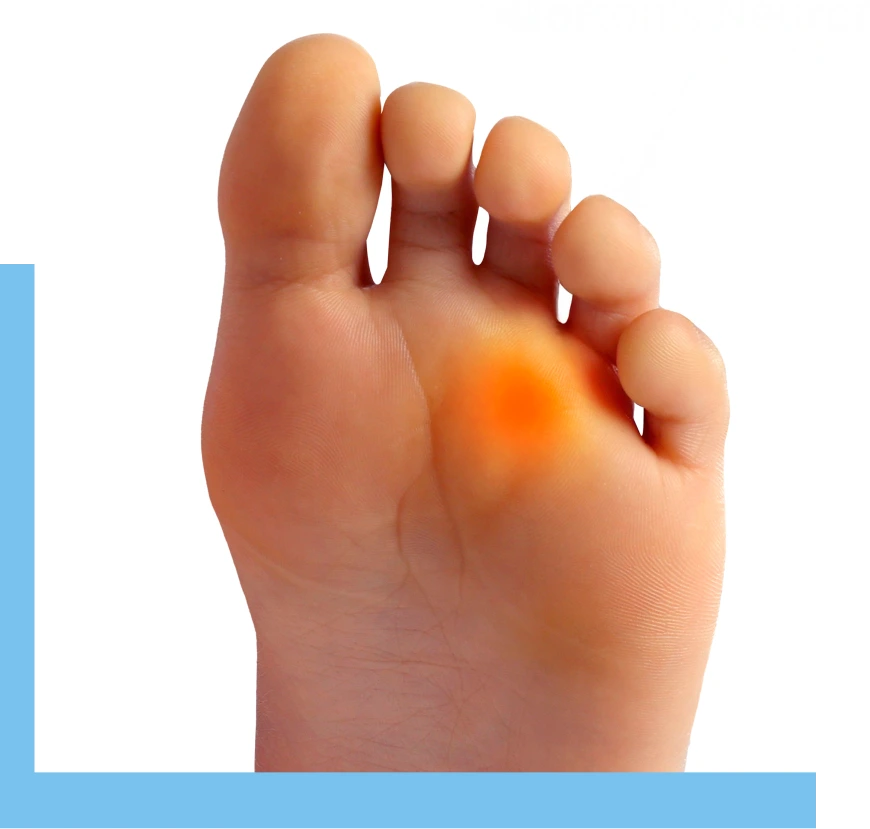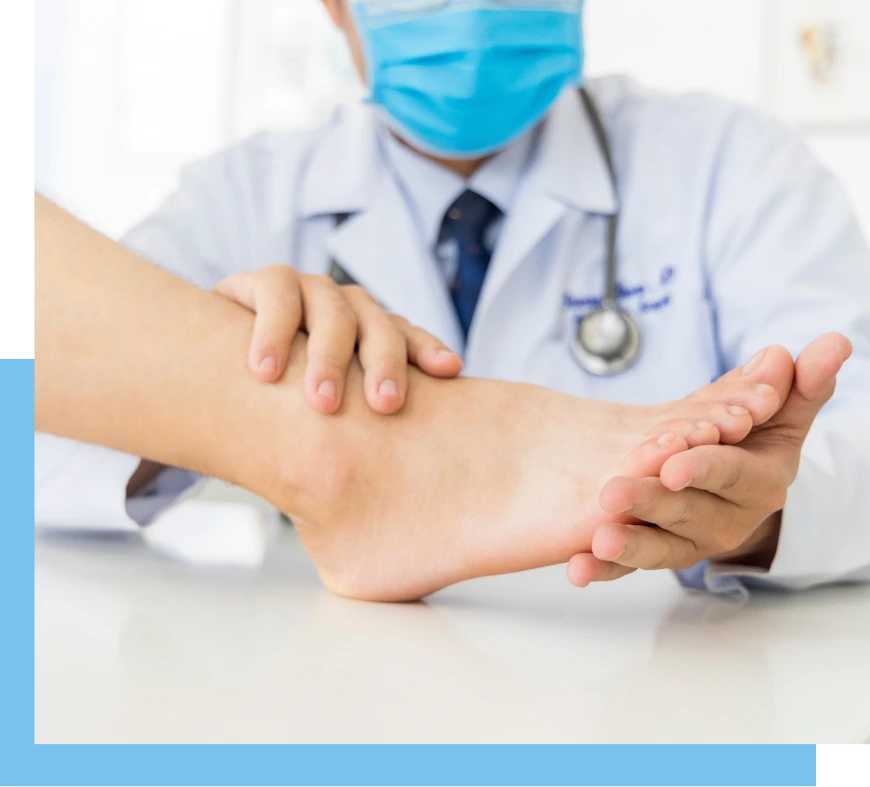Dr. Curson offers comprehensive neuroma treatment in Surfside, FL, providing personalized care to relieve discomfort and restore foot function.
Dr. Curson offers comprehensive neuroma treatment in Surfside, FL, providing personalized care to relieve discomfort and restore foot function.


Neuroma is a foot condition that may develop when the tissue around one of the nerves leading to your foot begins to thicken. When this occurs, you may experience some discomfort as if you were standing on a pebble stuck in your shoe. Most symptoms will not appear outwardly and will be experienced as a sharp, burning pain in the ball of the foot, along with a stinging or burning feeling in the toes that may sometimes lead to numbness.
Morton’s neuroma is the most common type of foot neuroma, typically developing between the third and fourth toes. It occurs when the tissue around one of the nerves leading to the toes thickens, causing sharp, burning pain, tingling, or numbness in the ball of the foot. Patients often notice discomfort that worsens with tight shoes or prolonged walking, prompting them to seek treatment to relieve pain and restore normal foot function.
Hauser’s neuroma forms between the first and second toes and is less common than Morton’s neuroma. The nerve compression causes localized pain, a burning sensation, and sometimes numbness, which can make walking or wearing certain footwear uncomfortable. Early diagnosis and treatment are essential to prevent the symptoms from worsening and to preserve mobility and comfort.
Heuter’s neuroma develops between the second and third toes and can cause pain, tingling, or a feeling of a pebble in the shoe. While less frequently seen than Morton’s neuroma, it can still significantly impact daily activities and walking. Treatment focuses on relieving pressure on the affected nerve to reduce discomfort and restore normal foot function.
Joplin’s neuroma occurs near the base of the big toe and is often associated with pain and swelling in the area, sometimes accompanied by numbness. This type of neuroma can make walking and wearing shoes painful, prompting patients to seek professional care. Effective treatment aims to relieve nerve compression and improve mobility while preventing recurrence.

Some factors that contribute to the formation of a neuroma include wearing high heels or ill-fitting shoes that put extra pressure on your toes or the balls of your feet. There is a link between the development of Morton’s neuroma and certain high-impact sporting activities. Activities you may want to avoid participating in too frequently include jogging and running. Too much repetitive trauma can cause a strain on the feet and increase the chances of developing a foot complication. Other sports that require the use of tightly worn shoes, such as skiing or rock climbing, may also increase your chances of getting neuromas. Certain foot deformities can also lead to the development of neuromas. Some of these deformities that increase the likelihood of getting this condition include bunions, hammertoes, and flat feet.
In some cases, injections may help alleviate pain caused by a neuroma. These injections typically involve corticosteroids or other medications that reduce inflammation and swelling around the affected nerve. Patients often experience relief that allows them to resume normal activities while avoiding more invasive procedures.
Sound wave therapy uses a handheld device to deliver targeted pulses to the affected area. This non-invasive medical treatment stimulates the body’s natural healing processes, promoting tissue regeneration, increased blood flow, and pain relief. Each treatment session is designed to reduce inflammation and encourage the repair of damaged tissue, helping patients regain comfort and mobility.
In more severe cases, complete removal of the nerve may be required. This surgical intervention is considered when other treatments fail to relieve persistent pain and nerve compression. While more invasive, complete nerve removal can provide lasting relief and significantly improve the quality of life for patients suffering from chronic neuroma symptoms.

Many patients may benefit from neuroma treatment if they are experiencing persistent foot discomfort that affects their daily life. Here are the common groups of candidates:
Individuals who experience a sharp or burning pain between the toes that interferes with daily activities.
Patients with a tingling sensation or numbness in the foot that persists despite rest or conservative care.
Those with a history of foot injuries that may have contributed to nerve compression or irritation.
People with flat feet or other structural foot issues that place extra pressure on the nerves in the toes.
Anyone whose symptoms limit walking, exercising, or wearing shoes comfortably, making daily activities more difficult.

Seeking care for persistent foot pain can make a meaningful difference in your daily routine. Addressing nerve irritation early helps patients regain comfort and maintain an active lifestyle.
Our neuroma treatments provide the following benefits:

If you’d like more information about Morton’s neuroma, we suggest you consult with our specialist in podiatric medicine. Dr. Curson can give you information about treatment options that best suit your needs. Our office staff is available to help you schedule an appointment and answer any questions you may have. During your visit, Dr. Curson will evaluate your specific case to develop a personalized plan for your care.

The duration of treatment to relieve common neuroma symptoms varies depending on the severity of the condition and the type of therapy used. Most patients notice improvement within a few weeks to a few months after treatment begins. The timeline can also depend on the size and location of the treated area. Proper care and follow-up play an essential role in achieving lasting relief.
Physical therapy may be recommended following neuroma surgery to ensure optimal recovery. Rehabilitation focuses on restoring strength, flexibility, and proper function in the treatment area, helping patients regain normal mobility and reduce the risk of recurring symptoms. Dr. Curson will determine if a formal rehabilitation program is necessary based on your individual needs.
Yes, untreated neuromas can increase the risk of developing other musculoskeletal conditions. Persistent foot pain can alter the way you walk or stand, placing extra stress on the heel bone, calf muscles, and Achilles tendon. Over time, this can contribute to inflammation, arthritis, plantar fasciitis, and even stress fractures, making early evaluation and treatment essential to prevent long-term complications.